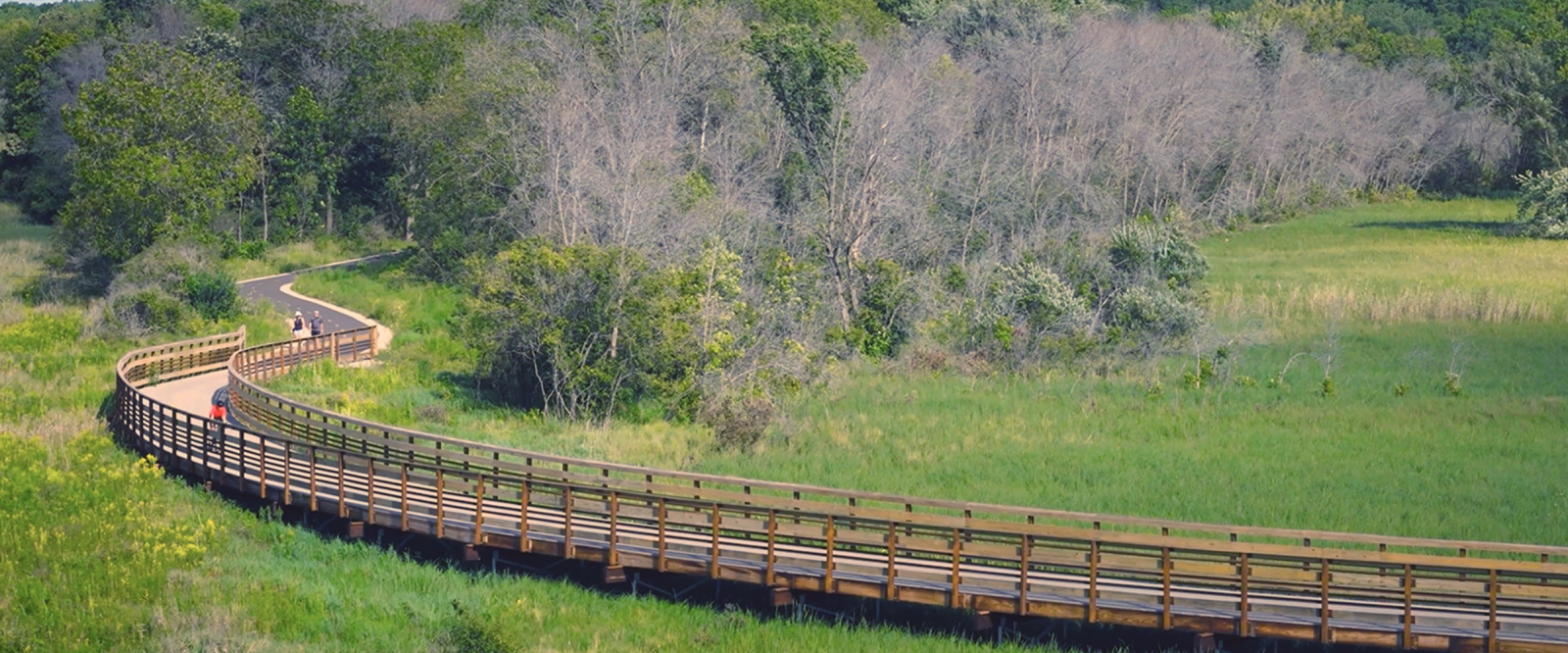The Power of Engineering: Balancing Nature, Access, and Ingenuity

Written by: Samantha Herheim, PE, KL Engineering
![]()
What does it take to build a trail?
A little asphalt? Some signage? Maybe a bridge?
Now imagine building that trail through a delicate wetland, across soft soils, over a creek, and along a lakeshore—while preserving the ecosystem, planning for floods, and ensuring that people of all abilities can access it year-round.
That’s what happened in Dane County, Wisconsin.
Led by KL Engineering, Inc., the Lower Yahara River Trail Phase 2 and Fish Camp County Park Improvements project might just look like a scenic walking and biking pathway on the surface. But underneath, it's an example of engineering innovation, problem-solving, and long-term thinking.
Where engineering meets nature.
The Lower Yahara River Trail Phase 2 and Fish Camp County Park Improvements project connects people to one of Wisconsin’s most beautiful natural areas—Lake Kegonsa and its surrounding wetlands. But the environment is as sensitive as it is stunning. That meant heavy machinery couldn’t just roll in and start digging.
Instead, engineers had to be creative. Timber matting was used to allow equipment to pass without permanently disturbing the wetlands. Boardwalks were built using helical piles—spiral-shaped supports that screw into the ground—to avoid damaging the fragile soil.
These aren’t just technical details. They’re solutions that protect Wisconsin’s natural resources, while still delivering the infrastructure people need.

Accessibility isn’t optional. It’s essential.
Access to nature shouldn’t depend on mobility. The engineers worked closely with groups like Access Ability Wisconsin to make sure everyone—regardless of age or ability—could enjoy the space fully and safely. The new trail, boardwalk, and bridge are all ADA-compliant. So are the fishing pier, kayak launch, boat pier, and even the parking areas.
Designed for today. Built for the next 100 years.
This project wasn’t about quick fixes. The project team designed the boardwalks and trails above the 100-year flood elevation. Why? Because they knew that climate conditions are changing—and that infrastructure needs to keep up. By thinking long-term, they avoided costly repairs down the road.
A community connector.
Trails do more than get you from Point A to Point B. They connect communities. They get people outside. They boost local businesses, invite tourism, and give kids, families, and older adults a place to move and breathe.
Behind every smooth boardwalk and scenic overlook is a team of engineering professionals solving tough problems. When the engineering is done right, people don’t even notice it. They just know it works.
The big picture.
The Lower Yahara River Trail Phase 2 and Fish Camp improvements project is more than a trail project. It's a reminder that infrastructure isn’t just about concrete and steel. It’s about people. It shows how engineering firms bring value to the state—not just through technical expertise, but by designing public spaces that last, serve everyone, and preserve what makes Wisconsin special.
And that’s the power of engineering.
About the Guest Blogger
 Specializing in shared-use path projects, Samantha Herheim, PE, is a Senior Project Leader at KL Engineering, Inc., with over 20 years of experience. ACEC WI Member Firm KL Engineering, Inc. is a Wisconsin-based civil engineering firm delivering infrastructure solutions since 1991.
Specializing in shared-use path projects, Samantha Herheim, PE, is a Senior Project Leader at KL Engineering, Inc., with over 20 years of experience. ACEC WI Member Firm KL Engineering, Inc. is a Wisconsin-based civil engineering firm delivering infrastructure solutions since 1991.
